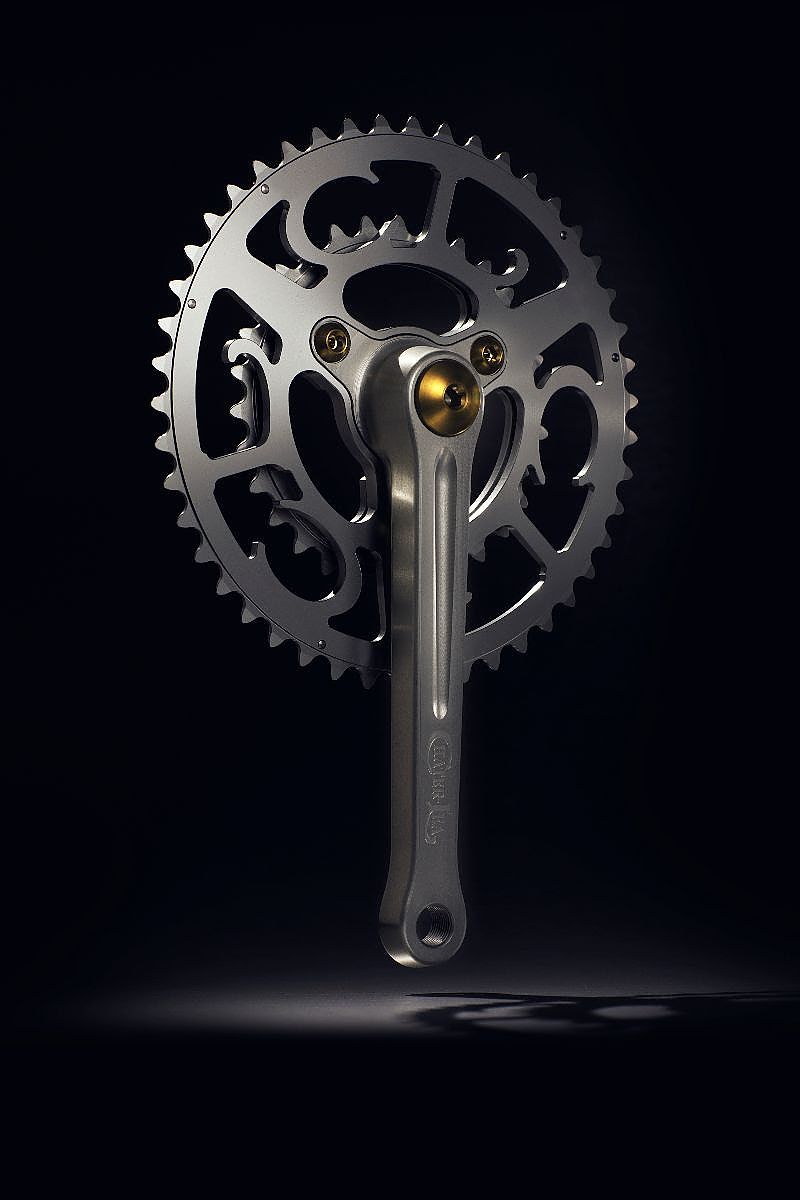Not long after, I would find out about Japanese makers of high-quality equipment like Sugino, Nitto and SunTour, whose derailleurs became my "go-to". Nitto, Sugino and Campagnolo, of course, survive: All except one of my Mercians is equipped with Nitto bars and/or stems, and Sugino cranksets. Negrosa, my black 1973 Mercian Olympic, sports the same-year Campagnolo Nuovo Record gruppo (and Cinelli bars and stem) that came with it.
Sadly, the SunTour name lives only in mostly low-end suspension forks under the SR-SunTour brand. Weinmann is a marque for mostly heavy and low-end rims made in China or Taiwan, and Mafac, Huret and other classic names are gone altogether.
Another name I encountered in my early cycling days is Chater-Lea. By the time I learned about them, four decades ago, they were on the brink of extinction. They would file for bankruptcy in 1987, and seemed to live on only in the memories of those of us old enough (in my case, just barely) to know about classic British bike parts.
Now, I have only seen a few Chater-Lea parts: sturdy bottom brackets for those pencil-thin cottered cranks that found their way onto beautiful old English (and other) frames before cotterless chainsets (yes, that's what the English call them) took over the peloton and market--and, some beautifully-made pedals. Their "rattrap" design was something like Lyotard's, but better, in materials, workmanship and aesthetics.
It seems, though, that Chater-Lea suffered the fate of Lyotard and other old-line bicycle component makers in the 1980s: designs and market preferences changed, but companies like C-L and Lyotard didn't. With the advent of mid-priced cotterless cranks and clipless pedals, the market for high-quality cottered bottom brackets and traditional cage or platform pedals all but disappeared. In the meantime, companies that changed their designs and product lines, as often as not, shifted their production to low-wage countries. That is how nearly all of the British bicycle component (and a good part of the country's bicycle) industry, along with many of its counterparts in France and the rest of Europe, disappeared in the 1980s.
Well, it seems that us old folks (OK! OK!) aren't the only ones who remember Chater-Lea. Andy Richman, a Brit who lived and worked in Washington, DC, for a number of years, has returned to his native country to resurrect the Chater-Lea name and oversee the design, manufacture and launch of its first product in more than three decades--and its first new product in more than half a century.
Appropriately enough, it's a pedal. But it's not any old crank appendage. Even someone who's not a cycle enthusiast can see that it's made with better materials and more care--and purely and simply looks better--than your typical "rat trap", with all due respect to MKS (whose pedals I use). The new Chater-Lea "Grand Tour" pedal is made from marine grade 316 and hardened 17-4PH stainless steel studded with polished brass rivets.
Oh, and it's made in the UK--in Bristol, to be exact. "This stuff needs to be made in the UK," says Richman. It's "high-end, beautiful, artisanal," he explains. "If jobs are going to come back to the UK, it's got to be for making this kind of stuff."
 |
| The new Chater-Lea Grand Tour pedal |
Chater-Lea made "this kind of stuff" that was the class (along with BSA) of the bicycle component world. Begun in 1890, it would branch out into motorcycle and car parts, and complete motorcycles and cars. During World War II, it made parts for the Mosquito Fighter Bomber. After the war, Chater-Lea returned to its bicycle roots and enjoyed prosperity during the 1950s but started to falter, along with many other companies in the British cycle industry, during the 1960s. (Little did we know that all of those Raleigh and Dawes bikes we saw during the 1970s Bike Book were the shadows of companies that would "give up the ghost" a decade or two later!)
Richman is himself a bike enthusiast who knew of the brand before his quest to revive it. What motivated him, though, was a shopping trip in Brighton that took him to Condor, one of the premier bicycle shops in Britain. There, he eyed a 1948 Condor frame and persuaded the shop's owner to sell it to him. As Richman left the store, the owner remarked, "You do know there's really only one set of components worthy of going on this bike? Chater-Lea."
Someone, I forget who, once said, "If I want to read a good book, I write one." It seems that Richman knew that if he couldn't find "worthy" components, he'd have to make them. And he's begun, with his Grand Tour pedal.


.jpg)
.jpg)
.jpg)
.jpg)

.jpg)

